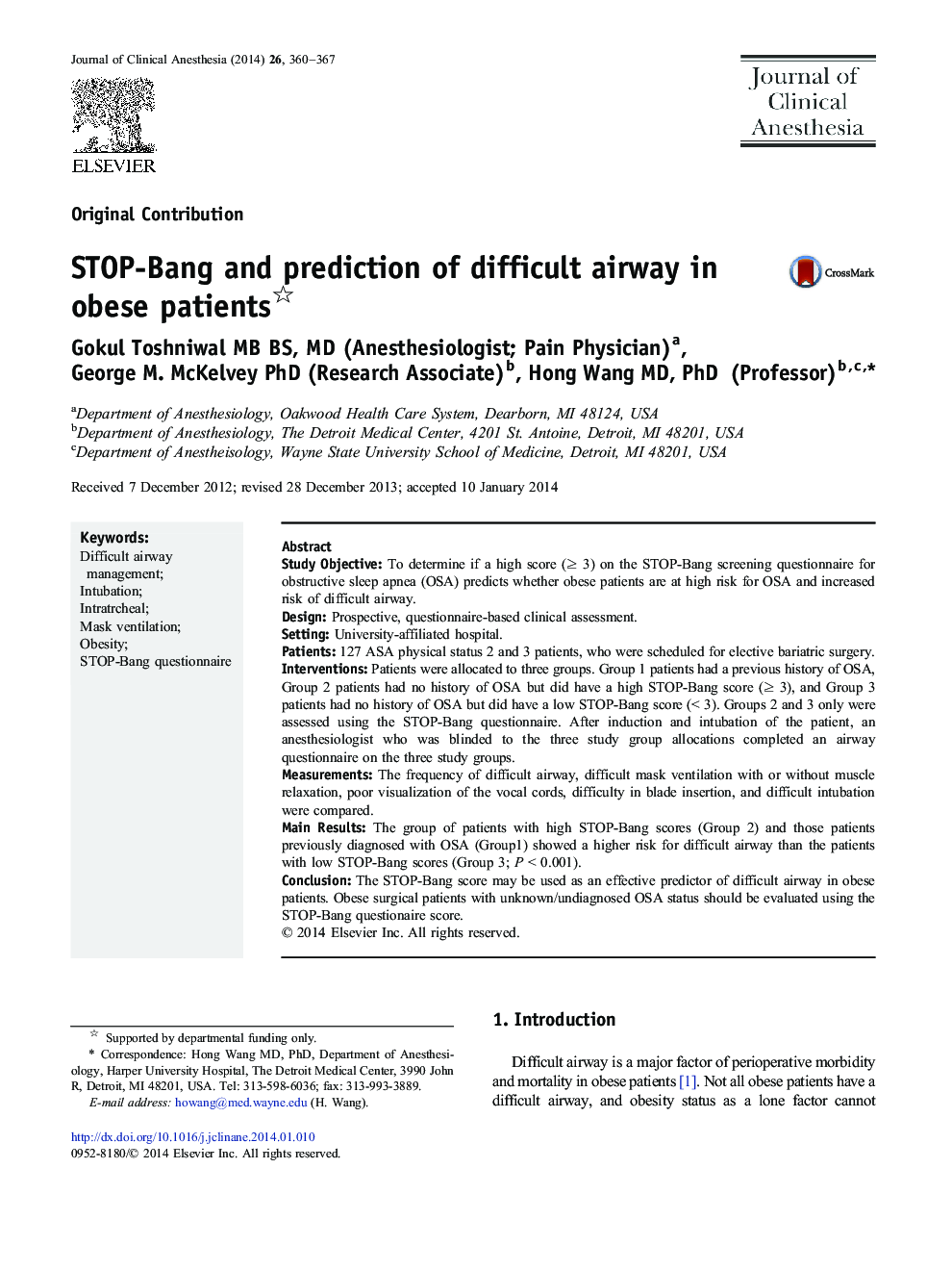| Article ID | Journal | Published Year | Pages | File Type |
|---|---|---|---|---|
| 2762913 | Journal of Clinical Anesthesia | 2014 | 8 Pages |
Study ObjectiveTo determine if a high score (≥ 3) on the STOP-Bang screening questionnaire for obstructive sleep apnea (OSA) predicts whether obese patients are at high risk for OSA and increased risk of difficult airway.DesignProspective, questionnaire-based clinical assessment.SettingUniversity-affiliated hospital.Patients127 ASA physical status 2 and 3 patients, who were scheduled for elective bariatric surgery.InterventionsPatients were allocated to three groups. Group 1 patients had a previous history of OSA, Group 2 patients had no history of OSA but did have a high STOP-Bang score (≥ 3), and Group 3 patients had no history of OSA but did have a low STOP-Bang score (< 3). Groups 2 and 3 only were assessed using the STOP-Bang questionnaire. After induction and intubation of the patient, an anesthesiologist who was blinded to the three study group allocations completed an airway questionnaire on the three study groups.MeasurementsThe frequency of difficult airway, difficult mask ventilation with or without muscle relaxation, poor visualization of the vocal cords, difficulty in blade insertion, and difficult intubation were compared.Main ResultsThe group of patients with high STOP-Bang scores (Group 2) and those patients previously diagnosed with OSA (Group1) showed a higher risk for difficult airway than the patients with low STOP-Bang scores (Group 3; P < 0.001).ConclusionThe STOP-Bang score may be used as an effective predictor of difficult airway in obese patients. Obese surgical patients with unknown/undiagnosed OSA status should be evaluated using the STOP-Bang questionaire score.
